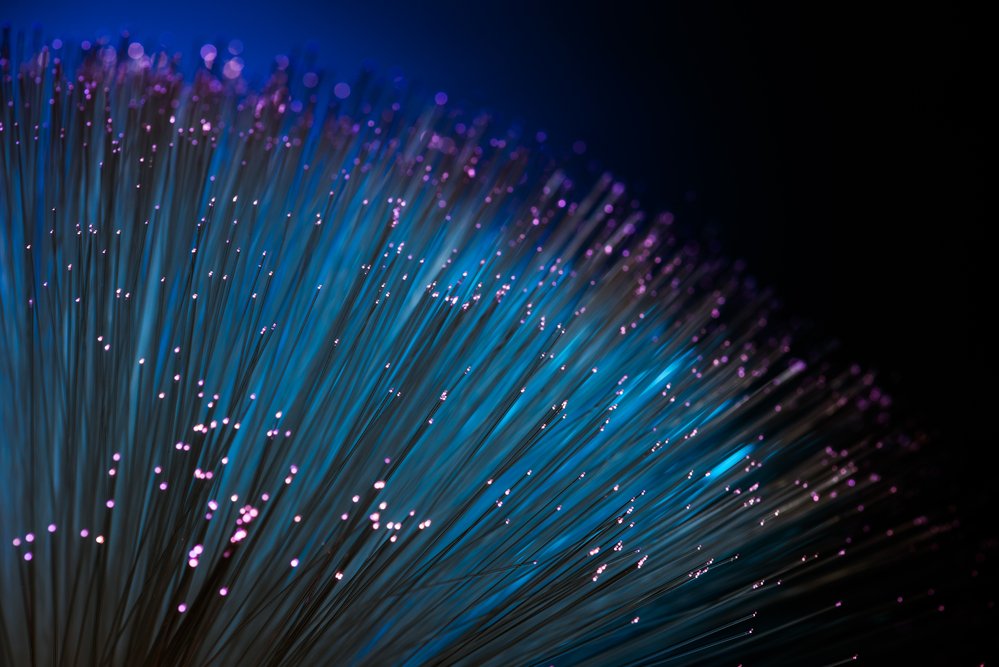The quest for a reliable, high-speed internet connection has intensified as our digital lives expand. Two primary contenders in this race are the National Broadband Network (NBN) and Fibre optic technology. While both aim to deliver fast internet, they differ significantly. Fiber optic technology, utilizing optical fibre cables, is celebrated for its capacity to provide maximum speed and consistent performance. On the other hand, NBN, a mix of technologies including fixed wireless connections, offers varying levels of service. As consumers seek top-tier Internet Service Providers, understanding the nuances between these options is crucial. This article sheds light on the key differences to help you determine the best fit for your internet needs.
Understanding NBN
The National Broadband Network (NBN) is Australia's nationwide infrastructure upgrade designed to deliver faster and more reliable internet connection to homes and businesses. Utilizing a variety of connection types, including Fiber-to-the-Premises (FTTP) for optimal performance and fixed wireless connections in remote areas, the NBN aims to replace existing copper infrastructure with modern technology. While internet speeds can vary based on the NBN connection type, the overall goal is to provide a significant boost to Australia's digital capabilities through increased access to high-speed internet services from various Internet Service Providers.
Exploring Fiber Technology
Fiber optic technology, utilizing incredibly thin strands of glass or plastic known as fibre optic cables, has revolutionized internet connectivity. Unlike traditional copper-based connections, Fiber delivers unparalleled internet speeds, making it the preferred choice for both residential and business users. This cutting-edge technology ensures reliable internet connections by transmitting data as pulses of light, resulting in minimal signal loss and superior performance compared to NBN connection types like fixed wireless.
As a result, Fiber has become the cornerstone of modern communication, powering everything from streaming HD content to enabling lightning-fast downloads and uploads. With its ability to support demanding applications and future-proof connectivity needs, Fiber infrastructure is essential for businesses seeking robust Business Broadband Services. As Internet Service Providers continue to expand their fibre networks, consumers and businesses alike can look forward to experiencing the full potential of high-speed internet through fibre connections.
Сomparing Speeds
When it comes to achieving ultra-fast, reliable internet connections, dark fiber and NBN offer distinct advantages. Dark fiber, comprising dedicated fibre optic cables transmitting data via light signals, provides unparalleled internet speeds. Its symmetrical nature ensures equal upload and download speeds, making it ideal for demanding internet usage such as video conferencing, large file transfers, and etc. Unlike the variable speeds offered by different NBN connection types (FTTP, FTTN, HFC, etc.), dark fiber delivers consistent, high-performance connectivity.
While some NBN providers offer impressive speeds, particularly with FTTP connections, they often cannot match the raw speed and reliability of dark fiber. For businesses seeking to future-proof their operations and gain a competitive edge, Business Fibre connections powered by dark fiber offer a superior solution. By leveraging dedicated fibre infrastructure, businesses can enjoy unmatched performance, reduced latency, and increased network control compared to shared NBN networks.
Reliability and Consistency
Fiber optic technology offers a significant advantage over the National Broadband Network (NBN) in terms of reliability. By transmitting data as light signals through fibre optic cables, it is virtually immune to the interference and signal loss that often plague traditional copper-based networks. This ensures a consistent and stable internet connection, regardless of distance from the exchange point or external factors like electrical storms.
In contrast, NBN reliability can vary significantly based on the chosen connection type. While Fiber-to-the-Premises (FTTP) offers a more reliable experience, other NBN options such as Hybrid Fibre Coaxial (HFC) and Fixed Wireless can be susceptible to disruptions, particularly during peak usage times. For businesses reliant on uninterrupted internet connectivity for critical operations like video conferencing, online gaming, or large file transfers, the superior reliability of fibre optic connections is essential.
Additionally, fibre optic technology is less prone to outages caused by natural disasters or physical damage due to its robust infrastructure. This resilience further enhances its reliability advantage over NBN connections, which can be more vulnerable to disruptions in challenging conditions.
As the backbone of high-speed internet infrastructure, fibre optics provide a foundation for robust and future-proof business broadband services.
Key factors influencing reliability:
- Technology: Fiber optic cables vs. copper cables or wireless technology
- Infrastructure: Robustness and redundancy of the network
- Distance: Impact on signal strength and performance
- Interference: Susceptibility to external factors like weather or electrical noise
- Maintenance: Proactive network management and troubleshooting
By understanding these factors, businesses and consumers can make informed decisions about the most reliable internet connection for their needs.
Latency and Online Activities
Fiber truly excels in applications demanding minimal latency, such as online gaming, video conferencing, and real-time trading. Its ability to transmit data at the speed of light results in significantly lower latency compared to most NBN connections, ensuring a smooth and responsive user experience. Low latency is crucial for preventing lag, delays, and interruptions, making Fiber the preferred choice for activities where responsiveness is paramount.
In contrast, NBN latency can vary widely depending on the connection type and distance from the exchange point. While Fiber-to-the-Premises (FTTP) NBN connections offer relatively low latency, other technologies like Hybrid Fiber Coaxial (HFC) and Fixed Wireless often experience higher latency, which can impact performance in latency-sensitive applications.
Key factors influencing latency:
- Technology: Fiber optic vs. copper or wireless
- Distance: The longer the distance, the higher the potential latency
- Network congestion: High traffic can increase latency
- Server location: Proximity to the server affects response times
- Quality of Service (QoS): Fiber networks often prioritize real-time traffic, ensuring consistent low latency.
- Network architecture: Fiber networks generally have a simpler and more direct path for data transmission, reducing latency.
- Error rates: Fiber has a lower error rate than copper or wireless connections, leading to fewer retransmissions and lower latency.
By understanding these factors, users can select the internet connection that best suits their specific needs and priorities.
Additional factors to consider when comparing Fiber and NBN latency:
- Online gaming: Fiber's low latency is crucial for reducing lag and improving gameplay experience.
- Video conferencing: Consistent low latency ensures smooth video and audio quality.
- Real-time trading: Minimal latency is essential for executing trades quickly and accurately.
- Remote work: Low latency enhances productivity and collaboration in virtual environments.
- Streaming: Fiber's low latency can provide a smoother streaming experience with less buffering.
- Cloud-based applications: Low latency is essential for accessing and using cloud-based services efficiently.
Ultimately, Fiber's ability to deliver consistently low latency makes it the superior choice for a wide range of applications where speed and responsiveness are critical.
Future-Proofing
Fiber optic technology is the future of internet connectivity. Its unparalleled speed, reliability, and virtually unlimited capacity make it the ideal choice for both residential and business users. Which relies on a mix of technologies including copper cables, fiber optics transmit data at the speed of light, ensuring minimal latency and exceptional performance.
While NBN plans offer varying speeds and reliability, fiber consistently delivers high-speed internet with superior performance. This makes fiber the preferred choice for demanding applications like online gaming, video streaming, and remote work. Additionally, fiber's ability to handle increasing bandwidth requirements positions it as the ideal solution for future technological advancements.
For businesses seeking a robust and scalable internet connection, fiber is essential. It provides the foundation for high-performance applications, cloud services, and seamless collaboration. By choosing fiber, businesses can future-proof their operations and gain a competitive edge.
Balancing Cost and Performance
Cost is a crucial factor when comparing NBN and fiber internet plans. NBN typically offers a wider range of price points and plans, making it a more accessible option for budget-conscious consumers. This flexibility in pricing allows users to choose a plan that aligns with their specific internet usage needs, data allowances, and budgetary constraints.
Fiber plans, while delivering superior speed, reliability, and future-proofing, generally come with a higher initial cost due to the advanced technology and infrastructure required. However, it's essential to consider the long-term value proposition. The potential for increased productivity, reduced downtime, and enhanced user experience due to higher speeds and lower latency can offset the higher upfront investment.
Ultimately, the decision between NBN and fiber depends on individual priorities, financial considerations, and internet usage requirements. For users seeking the best possible internet performance and willing to invest in future-proof technology, fiber is often the preferred choice. However, for those with budget constraints or moderate internet needs, NBN plans can provide a suitable alternative.
It's essential to carefully evaluate both options, considering factors such as internet usage, household size, data consumption, long-term goals, and the availability of each service in your area. By understanding the trade-offs between cost and performance, consumers can make an informed decision that best suits their needs and budget.
Key factors to consider:
- Price comparison: Carefully analyze the costs associated with different NBN and fiber plans, taking into account data allowances, contract lengths, and any additional fees imposed by internet service provider.
- Speed requirements: Evaluate the download and upload speeds needed for your online activities.
- Reliability: Consider how important it is to have a reliable internet connection for your daily life or business.
- Future-proofing: Assess the potential for increased internet usage and the need for higher speeds in the future.
- Installation costs: Compare the costs of installing fiber or NBN equipment.
- Data caps: Evaluate if data caps are a concern and how they impact your usage.
By carefully considering these factors, you can select the internet plan that offers the best balance of cost and performance for your specific needs.
Conclusion: Which Is Better?
While the National Broadband Network (NBN) has expanded broadband availability across Australia, leveraging a mix of technologies including existing copper infrastructure, fibre optic networks, and fixed wireless connections, fibre optic technology stands out as the superior choice for users seeking ultra-fast internet speeds, minimal latency, and exceptional reliability. Fiber's ability to deliver symmetrical speeds and high capacity internet far surpasses the capabilities of traditional copper-based networks, offering a future-proof solution for both residential and business premises.
However, the optimal internet solution depends on various factors including NBN technology type, broadband availability in your area, internet provider offerings, and specific service delivery requirements. While NBN plans offer a range of speeds and pricing options, fiber typically delivers faster speeds and a more consistent user experience.
Ultimately, the decision between NBN and fiber hinges on individual needs and priorities. For those seeking to maximize internet performance, minimize disruptions, and future-proof their connectivity, fiber emerges as the preferred choice. By carefully evaluating factors such as speed, reliability, cost, and availability, consumers and businesses can select the internet service that best aligns with their digital requirements and empowers them to harness the full potential of modern technology.






